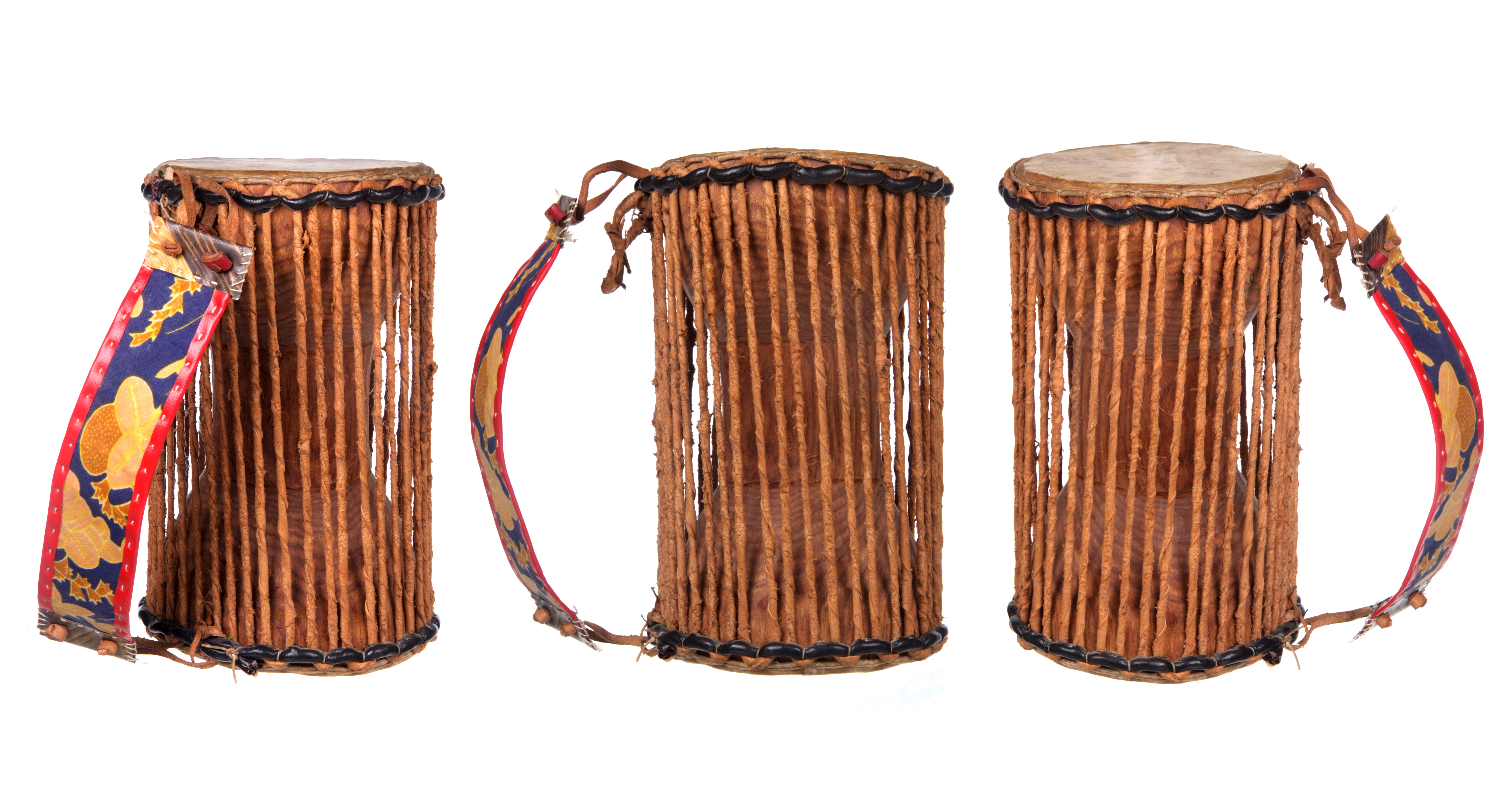
African Drum Language I
Talking Drums
Africa is renowned for the pulsating rhythms of its drums. The membrane drum most significantly illustrates this power. Although membrane drums come in different sizes and shapes, they all have one thing in common: they talk. The concept of a talking drum is widely embraced in African communities and provides perhaps the most important illustration of the way in which musical communication takes place in Africa. But how does an African drum talk? This is a question that many Westerners often ask. Simply put, African drums talk by imitating speech patterns. Most African languages are tonal languages, in the sense that the meaning of a word often depends on how the word is said. For example, the Yorúbá word "e̩-wa" could mean "beauty," "beans," or "please come," depending on how the word is intoned.
African drummers talk through their drums when they make their drum patterns imitate the speech contours of words. A musical performance on a drum is therefore significant not only for its musical features but also for what the drum is "saying." An ability to comprehend the linguistic as well as the musical aspects of a drum performance is an important prerequisite for an effective understanding of African drum music. To illustrate the musical and linguistic features of African drumming, we will focus on Dùndún music of the Yorúbá people of Nigeria and Benin in West Africa.
Yorúbá Dùndún Music
The Yorúbá people, whose population is about 30 million, live in South Western Nigeria and parts of Benin Republic. Yorúbá populations are also found in Brazil, Cuba, The Caribbean, and the United States. Yorúbá music is noted for its varieties of drums, many of which are regarded as "talking" instruments. The dùndún drum ensemble epitomizes Yorúbá drum music.
Composer: Anonymous
-
"Dundun Ensemble"
The dùndún drum, which has an hourglass shape, consists of a hollowed out wooden resonator with two round heads, each of which is covered with animal skin. Leather strings run from one drum head to the other; the drummer presses the strings to obtain different pitches on the drum head. The capability of the hourglass drum to generate an extensive range of pitches makes it the most talkative of all West African skin drums. Only one drum head is played, usually with a curved wooden beater, but sometimes with both hand and a wooden beater. Dùndún drums are used in both sacred and secular contexts such as annual yam-eating festivals, marriage ceremonies, and funerals.
Listen to the recording of Dùndún drumming and take note of the following:
Composer: Anonymous
-
"ifa Divination Dundun Drumming"
Composer: Anonymous
-
"ifa Divination Dundun Drumming" [ 00:00-00:07 ]00:06
The pattern of the isaaju, the first secondary instrument. Note that this pattern is repetitive and that it makes use of a single pitch area. This pitch area is relatively high when compared with the part of the iyaalu.
Composer: Anonymous
-
"ifa Divination Dundun Drumming" [ 00:15-00:21 ]00:07
Now listen to the pattern of the atele, which is also repetitive. The pitch area utilized in this pattern is also relatively high when compared with the part of the iyaalu.
Composer: Anonymous
-
"ifa Divination Dundun Drumming" [ 00:29-00:45 ]00:16
The atele pattern is followed by that of the gudugudu, which is also repetitive.
Composer: Anonymous
-
"ifa Divination Dundun Drumming" [ 00:51-01:01 ]00:10
The iyaalu (the leading instrument) finally joins the performance. Unlike the other three instruments, the part of the iyaalu is an improvised part, which is constantly changing and a lot more complicated.
Composer: Anonymous
-
"ifa Divination Dundun Drumming" [ 02:04-03:32 ]01:29
Now listen to the combination of these secondary instruments. Try to identify each of the patterns of the secondary drums that you had earlier listened to individually. Experiment with tapping each of the rhythmic patterns of the secondary instruments on the table.





African people made instruments from materials available to them, like wood, gourds, animal horns and skins.






